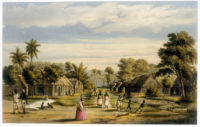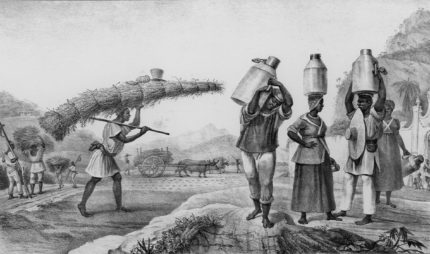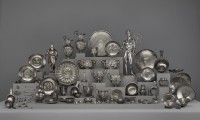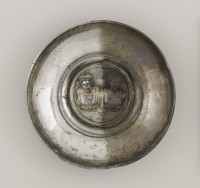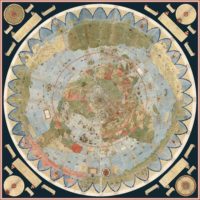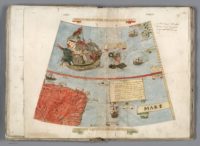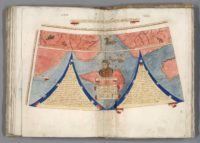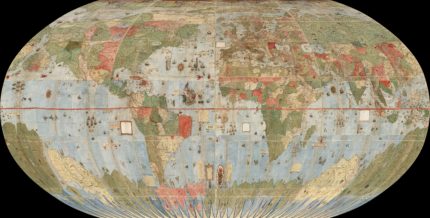If you’re at a loss on how to fritter away some time this weekend, I have a solution for you. Watch a couple of videos about the hoard of Bronze Age weapons discovered at the former Newton Farm in Carnoustie, eastern Scotland.
The first video captures the excavation in GUARD Archaeology’s Glasgow laboratory of the soil block containing the hoard. When I first wrote about this story last February, the only video available of the painstaking excavation of the 175-pound block of soil was a continuous scene a few seconds long of archaeologists scratching at the soil in minute movements. This video, uploaded to YouTube in December, summarizes the excavation and finds. There’s still minute scratching, which is awesome, but there’s so much more, plus descriptions of what you’re seeing.
In addition to the sensational weapons hoard, postholes and pits from two Neolithic rectilinear timber halls, one the largest Neolithic structure ever discovered in the British Isles, and gulleys and hearth remains from at least 12 Bronze Age roundhouses were found at the site. There wasn’t a great deal of information about these finds in February 2017, but in May, GUARD Archaeology Project Officer Alan Hunter Blair delivered a lecture packed with details, photographs and diagrams of the structures. That lecture is now available on YouTube.
He also covers the discovery of the hoard, its excavation in the lab and includes great pictures of the organic remains like the pouch the spearhead was found in and the fragment of strap still attached to the pommel of the sword. That part begins around the 15:45 mark.
I should warn you that he speaks very quickly, which is both a blessing and a curse. The former because it keeps the video nice and short at about 20 minutes; the latter because he zooms through it without looking up from his paper so delivery is a little dry and rushed. The information is fascinating, however, and the visual aids illuminating so it’s well worth watching.
